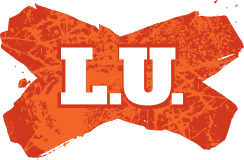To make it easier, I'll post Azkatro's article:
Injury Woes
In recent years we have seen the game of rugby league in Australia
increase in professionalism almost immeasurably. Expansion, among other
things, has seen a dramatic rise in the amount of money paid to players,
meaning they no longer need to pursue work outside of the game at the
top level.
An obvious consequence of this has also been a much higher level of
pressure on football clubs to succeed. With this has come full time
dedication from players and coaches, unlike the old days of having a job
outside of football. Players today are fitter than ever before and
that's arguably had as much to do with the faster pace of the game as
the introduction of the ten metre rule.
All of these developments have been wonderful from a spectator's point
of view, who can genuinely say that it takes not only a world class
footballer to make it to the top in rugby league, but also a world class
athlete.
But evidence suggests there is a frightening drawback to the heightened
level of professionalism the game now enjoys.
For the players, more pressure on the club means more frequent and
intense training sessions throughout the week and the off-season.
Expansion has meant more travelling is required throughout the year, and
a faster paced game means more hard work for the body to do during those
eighty or more minutes of football each week.
For the truly elite, there is the additional grind of representative
football State of Origin, City/Country, and Test Matches.
These are all factors which greatly increase the potential of fatigue.
And it doesn't take much research at all to find a wealth of medical
professionals to discover the real threat of fatigue in sports:
* The vast majority of rugby injuries occur during the second
halves of matches, when rugby athletes muscles are more tired
and less able to carry out skilful movements [1]
Fatigued muscles do a poor job of protecting their associated connective tissues, increasing the risk of damage to bone, cartilage, tendons and ligaments. [2]
Athletes with high consecutive days of training, have more injuries. [3]
These are just a few statements which may shed some light on the problem of ever-increasing injury tolls in the game.
Another misconception this serves to disprove is that of the impact of the sport. Many people believe - or would automatically assume that it's because of the high impact that players are often injured. Statistics indicate that the most common injuries are to the thigh and calf accounting for 40% of the overall total [1].
These kinds of injuries in particular are usually a result of the simplest and perhaps most fundamental aspect of league running. And this is where the danger of fatigue comes to the fore.
It's certainly not the only factor involved when a player suffers from an injury, however. Modern training techniques are another contributor to the much more athletic nature of rugby league.
One comparitively recent development in training methods is called
plyometrics. If they are done correctly, plyometrics can improve speed,
strength, acceleration and explosive power [4]. They have gained
markedly in popularity in recent years and many now consider them to be
an essential ingredient in the professional athlete's training regime.
Donald Chu, an authority on the subject, considers it to be the
icing-on-the-cake of athletic ability.
However it's also enjoyed its fair share of controversy. While the
benefits are obvious, it seems there is evidence which indicates that
gains made from practising plyometric drills may be outweighed by the
risk of severe injuries attributed to this training method, if practised
incorrectly [5].
One of the high-impact aspects of plyometrics is the depth jump, where
the athlete jumps down from a heightened platform and - without pause -
does a vertical jump at the point of landing. Because of the high forces
associated with depth jumps, they have the potential to cause problems
with ligaments and even the spine.
There are countless other factors which may contribute to the injury of
player, and factors discussed here are just a couple. But they certainly
suggest that the dramatic rise in the professionalism of rugby league in
Australia is having an influence on the number of injuries we see in the
game today.
[1]
http://www.sportsinjurybulletin.com/archive/rugby-injuries.html
[2]
http://www.brianmac.demon.co.uk/injury.htm
[3]
http://sportsmedicine.about.com/cs/injuryprevention/a/aa101801a.htm
[4]
http://www.sportsinjurybulletin.com/archive/plyometric-injuries.html
[5] Horrigan & Shaw, 1989.





